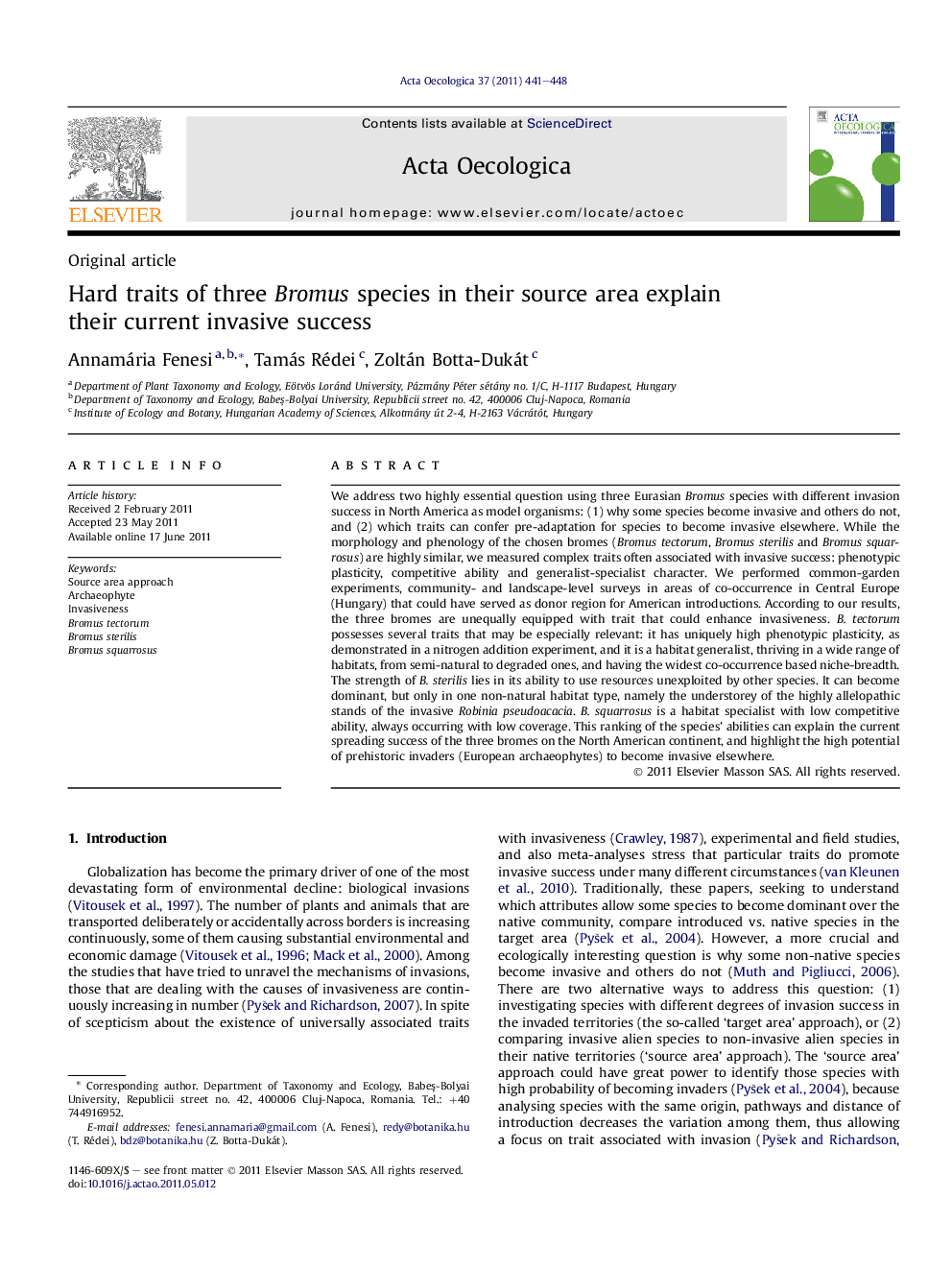| Article ID | Journal | Published Year | Pages | File Type |
|---|---|---|---|---|
| 4381367 | Acta Oecologica | 2011 | 8 Pages |
We address two highly essential question using three Eurasian Bromus species with different invasion success in North America as model organisms: (1) why some species become invasive and others do not, and (2) which traits can confer pre-adaptation for species to become invasive elsewhere. While the morphology and phenology of the chosen bromes (Bromus tectorum, Bromus sterilis and Bromus squarrosus) are highly similar, we measured complex traits often associated with invasive success: phenotypic plasticity, competitive ability and generalist-specialist character. We performed common-garden experiments, community- and landscape-level surveys in areas of co-occurrence in Central Europe (Hungary) that could have served as donor region for American introductions. According to our results, the three bromes are unequally equipped with trait that could enhance invasiveness. B. tectorum possesses several traits that may be especially relevant: it has uniquely high phenotypic plasticity, as demonstrated in a nitrogen addition experiment, and it is a habitat generalist, thriving in a wide range of habitats, from semi-natural to degraded ones, and having the widest co-occurrence based niche-breadth. The strength of B. sterilis lies in its ability to use resources unexploited by other species. It can become dominant, but only in one non-natural habitat type, namely the understorey of the highly allelopathic stands of the invasive Robinia pseudoacacia. B. squarrosus is a habitat specialist with low competitive ability, always occurring with low coverage. This ranking of the species’ abilities can explain the current spreading success of the three bromes on the North American continent, and highlight the high potential of prehistoric invaders (European archaeophytes) to become invasive elsewhere.
► We studied three bromes with different invasive success using the source area approach. ► B. tectorum outperformed their congeners with higher plasticity and more generalist character. ► B. sterilis exploits unused resources, thus has high potential to become more successful in the future. ► The unsuccessfulness of B. squarrosus lies in its specialist character and low competitive ability. ► Hard traits help predict potential invasive species.
